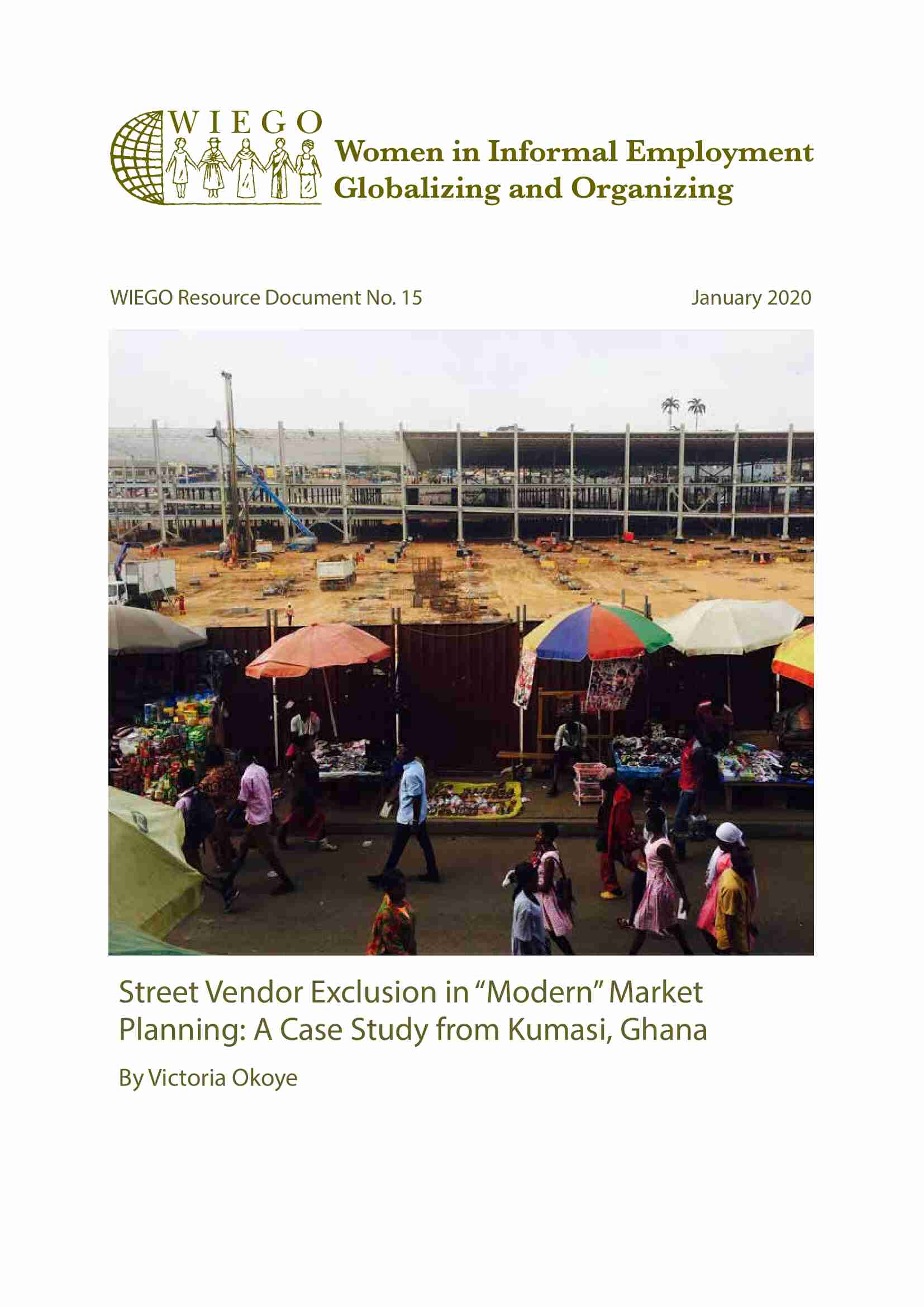Street Vendor Exclusion in “Modern” Market Planning: A Case Study from Kumasi, Ghana
The rise of “modern” markets is a growing trend in local economic development planning for the upgrading of central business areas in global South cities. However, these developments pose significant impacts for street vendors, who carry out commercial activities in public spaces, including market streets, sidewalks and transport stations.
This study, conducted in 2016 during the market construction phase, investigates the local experience of this phenomenon in Kumasi, the second-largest city in Ghana and home to Kumasi Central Market, one of the largest public markets in West Africa. In 2014, the city government announced plans to redevelop the market and adjacent Kejetia Lorry Park through a modernization project. In 2015, the KMA relocated the 1,000 market-stall vendors and 5,000 street vendors who traded at the lorry park in the first phase of construction. This study explored the impacts on Kejetia street vendors through structured interviews with city government and vendor leaders, surveys of relocated Kejetia street vendors, and street-level observations. This paper finds that the KMA’s legal and spatial exclusions of street vendors, including exclusions from the stakeholder engagement and registration processes, and relocating street vendors to a site at the market periphery have created increased commercial uncertainty for these vendors in both the short term and the long term. The findings reinforce previous research examining the critical role of the state in producing and re-producing informality, despite street vendors’ attempts and desires to formalize their livelihoods.
View list of all: Resource Documents

